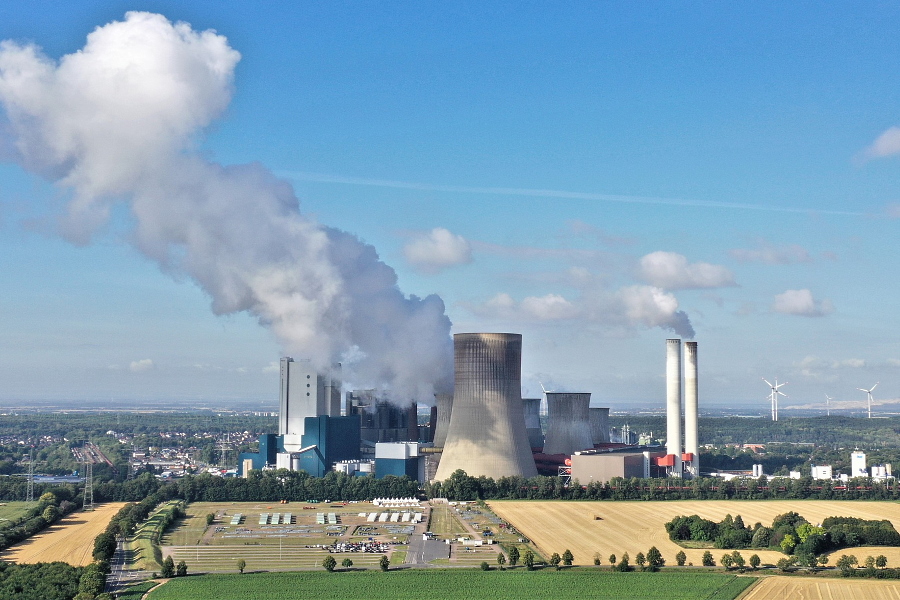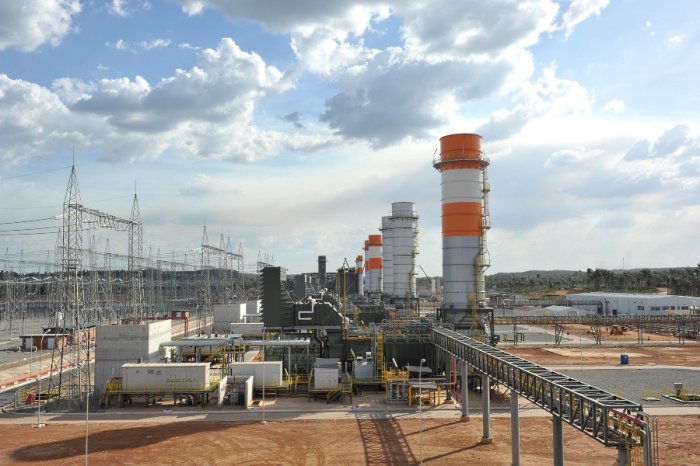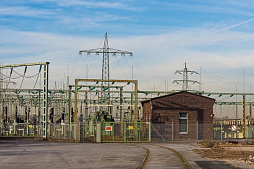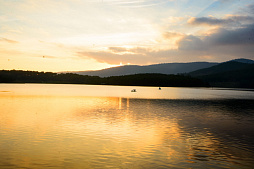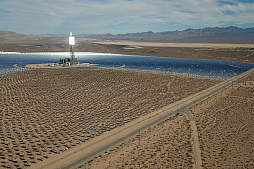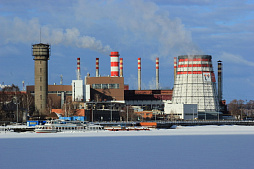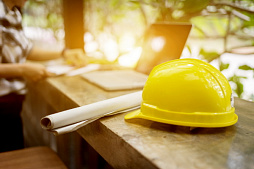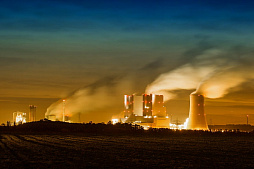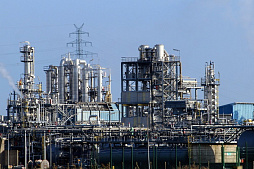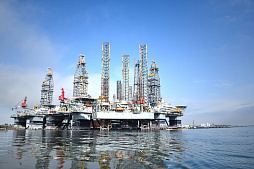Financing, engineering and construction for gas and steam (GaS) power plant
Link Bridge Financial LTDA LBFL offers:
• Investment financing from $ /€ 5 million or equivalent and more
• Minimizing the contribution of the project promoter
• Investment loan term up to 20 years
• Credit guarantees
Construction and supply of equipment for combined cycle power plants
The construction of combined cycle power plants (CCPP) is considered a promising investment in a sustainable energy future for the coming decades.The high performance of combined cycle power generation technologies and the lower greenhouse gas emissions produced by this type of power plant make CCPPs the cleanest fossil thermal energy source and explain why this technology is gaining popularity.
Combined cycle power plants convert the thermal energy of the fuel into electrical energy through the joint operation of a gas turbine and a steam turbine.
The process involves starting two successive cycles: the Brayton cycle, which corresponds to a conventional gas turbine, and the Rankine cycle, which is provided by a steam turbine.
Combined cycle thermal power plants are more flexible than conventional thermal power plants. This means, among other things, that they operate efficiently at partial load. Flexible operation during load fluctuations makes CCPP an excellent solution for increasing the stability of the power system in the era of growth of renewable energy sources, which are characterized by intermittent electricity production.
Combined cycle power plants are characterized by high efficiency in a wide range of loads, and their harmful emissions and consumption of cooling water are significantly lower.
Finally, these power plants are built much faster and require less land per MW of installed capacity.
The energy conversion efficiency of combined cycle power plants is around 55-60%, compared to 35-45% for conventional thermal power plants. In other words, more electricity is produced with less fuel. This technology has both environmental and economic benefits.
The company LBFL offers financing for combined cycle power plants, construction of power facilities under an EPC contract, including the procurement and supply of turbines, generators, heat recovery steam generators (HRSGs) and other equipment for CCPP from the world's leading manufacturers.
Our partners have successfully implemented many energy projects in Europe, Latin America, Africa and the Middle East in order to offer our vast experience and technical achievements for your business.
If you need funding and are interested in the construction of a combined cycle power plant, please contact us.
We will discuss the details of your project and propose the best ways to implement it, from project financing to the supply and installation of modern equipment.
Operating principle of combined cycle power plants
A combined cycle power plant, or combined cycle gas turbine (CCGT) plant, is a modern system for generating electricity based on two thermal units with two separate thermal cycles, a gas turbine cycle and a steam turbine cycle.Heat not used by one of the cycles (gas turbine) can be used as a heat source for another (steam turbine). In this way, the hot exhaust gases from the gas turbine cycle transfer the energy needed to operate the steam cycle. This configuration allows very efficient use of fuel with an energy conversion efficiency of over 55%. In other words, more than 55% of the energy contained in the fuel is converted into electricity.
In addition to generating electricity, the energy obtained from combined-cycle plants can be used for heating remote consumers and generating process steam for industry.
A simplified diagram of a combined cycle power plant is as follows.
Air drawn in from the environment enters the gas turbine where it is compressed and then mixed with fuel in the combustion chamber. The fuel enters this chamber in the form of tiny particles, which ensures complete combustion.
The hot gases from the combustion are then expanded in the turbine to operate a generator associated with the gas cycle.
Hot exhaust gases discharged from the gas turbine at temperatures over 500ºC enter the HRSG. This is where heat is exchanged between the hot exhaust gases and the high pressure water from the steam cycle, which means that the heat from the exhaust gases is used with maximum efficiency. The cooled gases are vented to the atmosphere.
With regard to the steam cycle, the water coming from the steam condenser is accumulated in the feed tank, from where it is sent further along the cycle for subsequent heat exchange.
In a heat recovery steam generator, water passes through three sectors:
• Economizers that raise the water temperature to near boiling point.
• Evaporation sectors located in the central part of the unit, where the liquid-vapor phase transition occurs.
• Superheating sectors that increase the energy of the steam by raising its temperature. These sectors are located in the area closest to the turbine exhaust, where the temperature reaches high values.
During the cycle, the steam produced is expanded in a steam turbine.
After performing mechanical work, the steam loses energy and condenses at sub-atmospheric pressure.
Combining two cycles, a gas turbine and a steam turbine, increases energy production compared to an open cycle.
Combined cycle power plants (CCPPs) are very energy efficient because they use heat from the hot gas turbine gas that would otherwise be released into the atmosphere. For this reason, many energy companies are currently ordering the modernization of old type thermal power plants according to this model. Moreover, the vast majority of new thermal power plants are designed as combined cycle plants as the most profitable and environmentally friendly solution.
Combined cycle advantages and limitations
Due to its high operational flexibility, whether it be generating electricity or generating steam, combined cycle technology is widely used to modernize steam power plants with the consequent increase in their efficiency.The advantages of combined cycle power plants are as follows:
• Extensive use of natural gas. Since the CCPP configuration is best suited for natural gas, it appears to be the most cost effective solution.
• Possibility of using other fuels, including diesel fuel and gasified coal, with high efficiency, although with restrictions on burners.
• High performance of the power plant in conditions of significant load fluctuations caused by the massive connection of renewable sources to the grid.
• Relatively low environmental impact in terms of nitrogen oxide emissions, as well as much less heat emission to the atmosphere.
• Lower cooling requirements compared to traditional thermal power plants.
• Low investment costs, as well as short terms of installation and start-up of equipment to achieve the required level of energy production.
• Significant economic benefits associated with high standardization of components, simplified assembly and maintenance.
The efficiency of the combined cycle power plants under construction today is about 58-60%.
This significantly exceeds the performance of open cycle power plants in which steam turbines operate independently.
The practical development of CCPP is closely related to the technological progress of materials for creating gas turbines capable of operating at high pressures and temperatures around 1100ºC. At some point this caused a delay in the development of equipment, but the situation improved dramatically in the 1990s. There are turbines on the market today that can withstand temperatures of 1400 ° C and above.
Improvements in equipment design and the introduction of new materials have helped to increase the power and efficiency of gas turbines and, therefore, to make the entire combined cycle more efficient.
This progress has been largely facilitated by the widespread use of ceramic and monocrystalline materials for the production of turbine blades.
One of the limitations imposed by high operating temperatures on equipment and components of a gas turbine cycle is thermal stresses arising from cyclic operation. These stresses are much greater than during continuous operation, since in cyclic operation, start-up and stop transients occur much more frequently.
Thermomechanical fatigue of metals occurs as a result of transient processes. An emergency stop has a significant impact on the life of a turbine, since in this respect each start is equivalent to approximately 20 hours of continuous operation, and one emergency shutdown is equivalent to approximately 200 hours of normal turbine operation.
Even under normal operating conditions, some components of the gas turbine circuit do not reach the expected life, especially the turbine blades.
In this regard, professional selection and installation of equipment becomes important, as well as competent operation of combined cycle power plants.
Another limitation is the change in the operation of the gas turbine depending on the environmental conditions. The turbine works less efficiently on hot days than on cold days. A gas turbine that operates at 0 ºC ambient temperature typically produces about 15% more electricity than the same turbine at 30 ºC.
Likewise, dry climate increases equipment efficiency.
For this reason, the calculation of the parameters of the equipment should be made not only on the basis of standard environmental conditions, but also taking into account the actual conditions of the planned operation.
When it comes to pollution, low NOx combustion chambers have been one of the most important advances in gas turbine technology. The disadvantage of this equipment is the instability of the flame due to the use of lean air-fuel mixtures. Flame instability can cause vibration and noise and further affect the life and reliability of the gas turbine.
Consequently, the project for the construction of a combined cycle power plant in each case requires individual solutions based on customer requirements and expected costs, environmental standards of a particular country, etc.
Environmental benefits of combined cycle power plants
Today, an important factor to be assessed when investing in the energy sector is the environmental impact of a particular project.In most parts of the world, companies are required to conduct preliminary environmental studies and propose corrective actions that will mitigate any negative environmental impacts of a future power plant.
This study evaluates the impact that a particular plan, program, project, work or activity has on the environment. It is important to note here that combined-cycle power plants emit some gases into the atmosphere, which are regulated by national standards and international obligations.
Liquid emissions from a combined cycle power plant enter natural water bodies from the cooling circuit and other technological processes. The properties of the effluent depend on the type of cooling system (open or closed circuit) and the origin of the water used (sea water or fresh water).
Toxic hazardous wastes emitted by CCPP include used transformer oil, fuel combustion products, used filter materials and other substances. In general, these facilities are safer than older steam power plants.
During the construction of combined cycle power plants, it is necessary to take into account the likelihood of accidents and natural disasters that pose a threat to the environment. Among them, cooling water pipe rupture, oil spills, gas leaks and many others.
Today, international standards require engineering companies to study potential accidents and abnormal operating conditions that can have a negative impact on the environment in order to minimize their consequences.
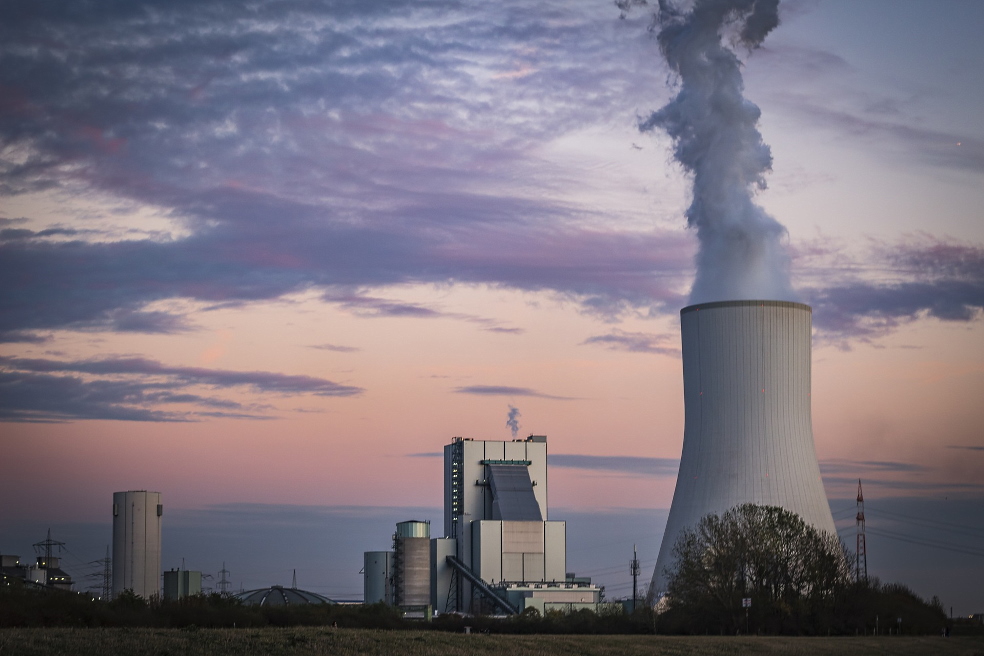
Combined cycle power plant: equipment supply
The main equipment for any combined cycle power plant includes a steam turbine, a gas turbine, and a heat recovery steam generator.Correctly selected, designed and installed, these components ensure reliable and uninterrupted operation of the power plant while achieving the required performance.
The common elements of a combined cycle power plant are presented in the table below:
| CCPP equipment | Principle of operation and purpose of equipment |
| Gas turbine | The gas turbine is responsible for converting the chemical energy contained in the fuel. It converts part of this energy into mechanical energy of rotation of the generator shaft, and the other part into thermal energy, which is used as a heat source. |
| Heat recovery steam generator (HRSG). | The heat recovery steam generator is responsible for converting the energy contained in the exhaust gases of a gas turbine into potential energy of steam at a specific pressure and temperature. |
| Water-steam cycle | This cycle includes a set of components responsible for transferring steam from a heat recovery steam generator to a steam turbine. |
| Steam turbine | The steam turbine is responsible for converting the potential energy of the steam into mechanical energy of the rotating shaft. |
| Generator | One or more generators (depending on the configuration of the power plant), which are connected to the shafts of the gas and steam turbines, are responsible for the efficient conversion of mechanical energy into electrical energy. |
| Electrical system | The CCPP electrical system provides both the power supply to the auxiliary equipment of the power plant and the export of the generated power to remote consumers. |
| Fuel supply system | Combined cycle plants use natural gas as their primary fuel, although high quality diesel and other fuels are used in many cases. |
| Cooling system | Some of the thermal energy contained in the fuel cannot be used and must be discharged into the environment. It can be discharged into the air through cooling towers or into water (natural reservoirs). An important goal of designing a combined cycle power plant is to minimize the amount of lost heat that is released into the air or water. |
| Water purification system | Modern combined-cycle power plants place high demands on the physicochemical properties of the liquid they use (usually water), which requires the installation of additional systems for its processing and control. |
| Ancillary systems | CCPPs include other ancillary systems such as water treatment plants, fire protection systems, and compressed air systems. |
| Control system | The plant control system is responsible for monitoring and controlling all of its elements, and it is usually fully automated. |
Gas turbine
The combined cycle gas turbine converts the combustion energy of a gas or liquid into mechanical energy and operates according to the Brayton cycle.In this turbine, air is filtered, compressed and injected as an oxidizer into the combustion chamber.
Part of the compressed air is also used to cool the hot parts of the combustion chamber and the first stages of the gas turbine.
Gas turbines can use two types of fuel:
• Gaseous fuels: mostly natural gas, propane or hydrogen.
• Liquid fuels: diesel fuel, liquefied petroleum gases, etc.
Gases generated during fuel combustion give off part of their energy to the turbine, converting the energy of the gas flow into mechanical energy of shaft rotation.
The maximum permissible temperature of gases both in the combustion chamber and at the inlet to the first turbine wheel is limited by the thermal and mechanical resistance of the materials.
Gas turbines are highly efficient units with a power range from 5 kW to 500 MW. Their main advantages are their low weight compared to power, as well as high operational flexibility. There are different types of gas turbines that are classified according to their design, the type of combustion chamber and the number of shafts they contain.
A gas turbine consists of a number of components, usually forming a single unit, which is supplied to the customer assembled and tested during the construction of a combined cycle power plant.
The main components of this unit are:
Air compressor
The function of the compressor is to pressurize the combustion air before it enters the combustion chamber at a pressure that depends on the specific turbine.The combustion chamber
In the combustion chamber, the fuel gas is burned together with air at a constant pressure. This combustion requires fuel to be supplied at a suitable pressure level, which is in the range of 30-50 bar for gaseous fuels and higher for liquid fuels.Turbine rotor
The rotor is a shaft to which the blades are attached. The rotor stores the mechanical energy of rotation, which is transferred by the gaseous medium under high pressure.Casing
The turbine casing is a high-strength insulating shell of the unit, which provides the necessary seal for the circulation of gases between different points of the turbine, maintaining appropriate pressure drops.Bearings
Bearings are rotating elements that securely connect the stationary parts to the moving parts of the turbine, ensuring smooth movement between them.Gas turbine accessories include combustion air filtration system, ice protection system, compressor cleaning system, starting system, lubrication, cooling and ventilation systems, fire detection system and so on.
Steam turbine
The steam turbine of a combined cycle power plant is a reliable and simple piece of equipment, well known and used for a long time in the power industry.This equipment has been studied in detail, since more than 50% of the world's electricity is generated by steam turbines.
The steam turbine in a combined cycle power plant design is a core element that follows the Rankine thermodynamic cycle. In steam turbines, the high pressure steam generated in the heat recovery steam generator is expanded to condensing pressure. Unused steam energy in the form of mechanical energy in the expansion process is partially transferred to the condenser, where the water vapor is converted into water and contributes to the subsequent pressure increase.
At the outlet of the condenser, one or two pumping stages are responsible for increasing the water pressure from the condensate well in the HRSG, where the water is heated, evaporated and the steam superheated at constant pressure.
The steam produced is injected into the steam turbine, repeating the described processes again. The steam turbines used in the combined cycle are similar to those used in traditional thermal power plants.
The main elements that make up a steam turbine are the injection system, rotor, casing, bearings, lubrication system, steam extraction system, oil cooling system, oil control system and other auxiliary units. Steam turbines are characterized by high reliability and simple design, so this equipment usually has a long service life.
Modern steam turbines are equipped with advanced automated control systems, the main task of which is to ensure the automatic operation of this equipment with minimal human intervention.
In addition to managing operating parameters to ensure safe operation of the equipment, they help make the operation of the turbine and associated components visible and understandable to the operator.
Heat recovery steam generator
A combined cycle heat recovery steam generator is an element that uses the energy from the exhaust gas of a gas turbine to convert it into steam.This steam can then be converted to electricity, used directly in industrial processes, or to produce heat in district heating systems.
HRSGs can be classified based on the presence of afterburning. HRSG without afterburner is the most common type of boiler used in combined cycles. In fact, it is a heat exchanger in which the heat of gases is transferred to the steam-water cycle by convection.
For postburned HRSGs, design changes are usually limited to the installation of burners upstream of the boiler. This allows the use of excess oxygen in the turbine exhaust gases without exceeding the temperatures permissible for insulating materials.
There are different types of HRSGs, each of which can be an ideal solution for a specific type of power plant.
Therefore, an important task in the construction of a combined cycle power plant is the selection of the type of equipment and manufacturer that is best suited for the project. As long-term experience in the implementation of energy projects shows, the price and construction time do not play the most important role in this decision.
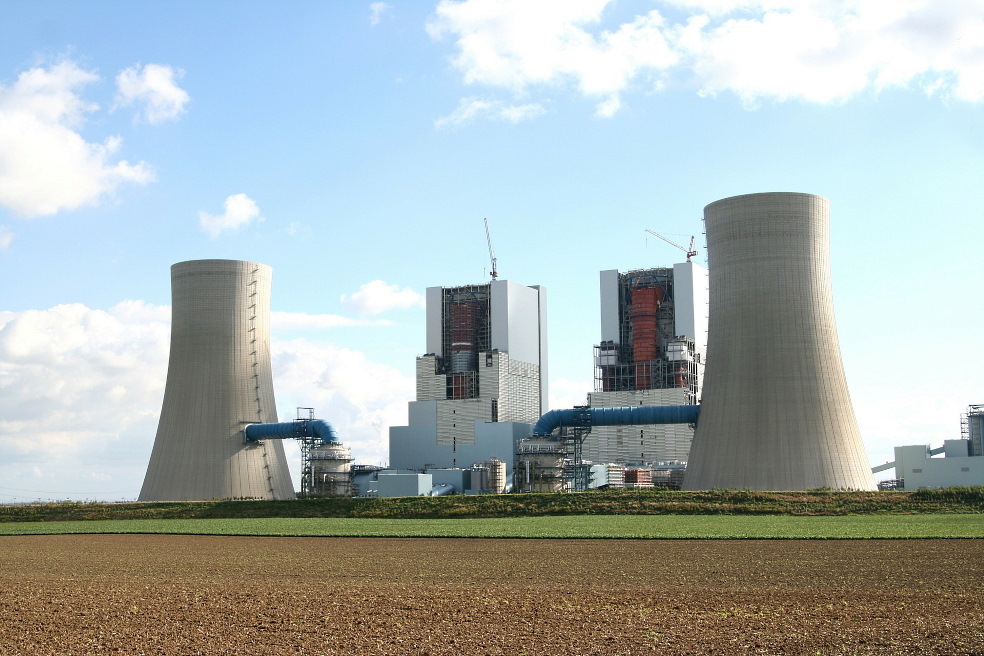
Some features that distinguish the HRSG from a conventional boiler:
• The HRSG is always designed for the specific gas turbine to which it will be connected.
• Since the temperature of the gases is relatively low (despite afterburning), the heat transfer is carried out mainly by convection.
• Gas consumption is limited by the need to minimize pressure drops, which reduces heat transfer and requires a large heating surface.
Heat recovery steam generators must be equipped with safety features in accordance with generally accepted engineering rules and in accordance with the standards of the country in which they are installed.
These safety elements include safety valves, steam valves, level indicators, etc.
Electrical equipment of a combined cycle power plant
The electricity generated by the generator is converted and supplied through power lines to consumers (industrial enterprises or household consumers).When constructing a combined cycle power plant, it is important to design the electrical system in the most rational way, ensuring efficient and reliable operation of the facility with minimal energy losses.
One or more transformers (if the power plant has multiple generators) increases the voltage from the generator rating to the voltage at the mains connection point. The most common transformers used in power plants are three-phase submersible expansion tank transformers.
An electrical substation includes a set of equipment that allows you to connect two AC electrical networks at the highest possible voltage, that is, with the highest voltage for the transmission of alternating current over long distances with minimal losses.
The main elements of the substation used in the design of combined cycle power plants for connecting generators to the power grid are disconnectors, voltage transformers, current transformers, as well as lightning protection, electrical protection and grounding systems.
Basic configurations of combined cycle power plants
In combined cycle power plants, multiple gas turbines can supply steam produced by a heat recovery steam generator to a single steam turbine.Depending on the number of basic elements in a power plant, several of the most common configurations are distinguished.
The location of the shafts of a gas turbine and a steam turbine, depending on whether they are aligned or not, allows us to classify power plants of this type by the number of shafts. Combined cycle power plants can have a so-called uniaxial or multi-axle equipment configuration.
In the uniaxial version, the generator can be located at the end of the axle (which is easier to maintain) or it can be installed between the gas turbine and the steam turbine. In the latter case, a clutch is added that connects the steam turbine to the gas turbine shaft and generator, allowing electricity to be produced by running the gas turbine alone (for example, when repairing a steam turbine).
The most common configurations currently used in commercial combined cycle power plants:
• 1x1 configuration: the gas turbine feeds the heat recovery steam generator and generates steam for a single Rankine cycle.
• 2x1 configuration: two gas turbines, each feeding its own heat recovery steam generator and producing steam for a single Rankine cycle.
• 3x1, 4x1 and other equipment configurations.
For 2x1 and 3x1 CCPP configurations, when, as a result of an abnormal situation, one of the boilers does not work, and the other works, there is a risk of steam returning to the inoperative boilers.
This could damage the pipeline. To avoid such situations, careful attention should be paid to checking the quality of the piping materials and shut-off valves.
1x1 multi-axis configuration
This is a popular version of a combined cycle power plant project in which the gas turbine and steam turbine are independent and both are connected to their own generators.The advantages of this configuration are as follows:
• Ability to work only with a gas turbine, providing, if necessary, the removal of gases to the atmosphere.
• Greater reliability of the gas turbine, which can operate independently in the event of a steam turbine failure.
• Possibility to install a steam condenser with axial and bottom arrangement.
• With two generators, this type of power plant can supply energy at two different voltages.
• Relatively easy maintenance of generators and turbines.
Disadvantages of 1x1 multi-axis configuration:
• Installation of two generators and two transformers increases the initial investment in the construction of the power plant.
• Significantly more space requirement compared to other types.
1x1 uniaxial CCPP configuration with clutch
The uniaxial configuration is the simplest of the bunch and assumes that a gas turbine and a steam turbine are connected on the same axle to drive a single generator.It is a cheap and effective solution that also saves on engineering costs as there are many off-the-shelf designs available.
Configuration advantages:
• Reduced investment costs due to fewer generators compared to multi-axle configuration.
• The generator, located between the gas turbine and the steam turbine, provides an optimal balance for the entire power plant.
• Lower construction costs due to the lower pedestal height when the equipment is axially located. In general, construction requires less space than a multi-axis configuration.
• The clutch simplifies the starting system by separating the gas turbine from the steam turbine. Unlike the single shaft without clutch, this configuration does not require an auxiliary boiler to preheat the steam when the turbine is started.
Disadvantages of the configuration:
• Less operational flexibility compared to multi-axis configuration.
• Electricity is supplied through a single generator, which reduces the overall reliability of the CCPP. In a multi-axis configuration, each generator can supply consumers through its own transformer with different voltages.
• Power plants of this type are significantly more difficult to maintain, including due to the more complex process of removing the rotor and other layout features.
• Phased construction and commissioning is not possible, unlike the multi-axis configuration. In this regard, this option is less convenient for projects to expand existing power plants.
1x1 uniaxial configuration without clutch
The advantages and disadvantages of the construction of combined cycle power plants of this type are similar to those listed above, but with the following differences:• The specific location of the generator makes it easy to inspect and repair.
• Since the steam condenser cannot be axially positioned, this configuration requires the construction of a high pedestal and a significant investment in civil works.
• Compared to other configurations, the gas turbine starter is more powerful as it must pull the steam turbine at the start of the cycle.
• At start-up, an auxiliary boiler is required to supply steam and initial cooling of the steam turbine during the run-in.
2x1 configuration of combined cycle plants
This configuration represents one of the most cost-effective options, providing high operational flexibility and quick return on investment.The 2x1 configuration is undoubtedly the most common among newly built combined-cycle power plant projects for a number of reasons. In this configuration, the plant has two gas turbines of the same capacity, each connected to its own generator, and the gas is fed to two independent heat recovery steam generators (HRSG).
However, this configuration has some disadvantages.
For example, a failure of a steam turbine will disable the entire cycle if there is no hot gas bypass in the gas turbines.
The configuration advantages are as follows:
• High operational flexibility due to the ability to operate with one gas turbine and one steam turbine and quickly start a second gas turbine.
• Better part-load performance as power is regulated by starting a second gas turbine.
• Easy access for generator inspection, repair and maintenance.
• Possibility of using simpler and cheaper air-cooled generators.
• No auxiliary boiler required.
It should be noted that in the engineering design of combined cycle power plants, the choice of equipment configuration is carried out individually, since each project differs in terms of its implementation, customer requirements and other criteria.
If you need advice from experienced engineers or asset managers who are involved in the construction and financing of combined cycle power plants in many countries of the world, please contact us and ask your questions.



